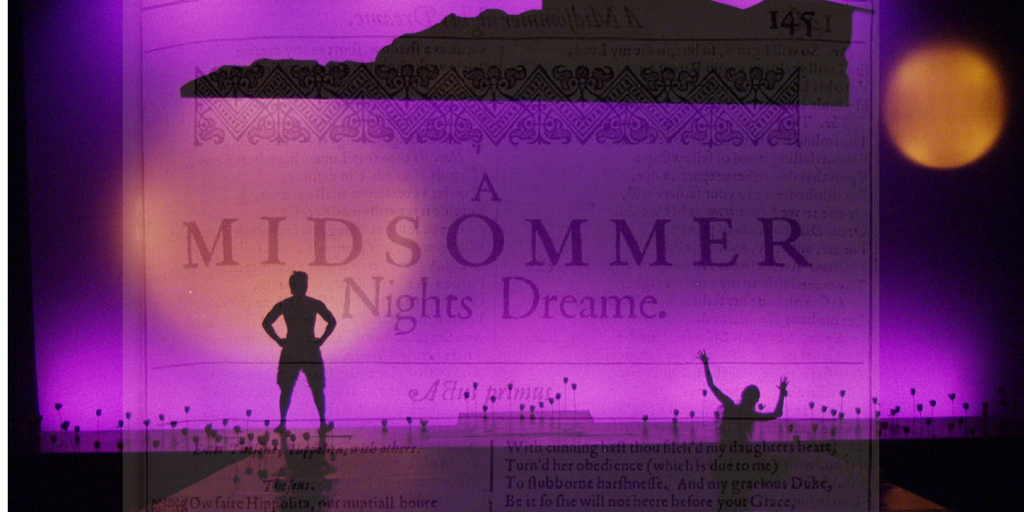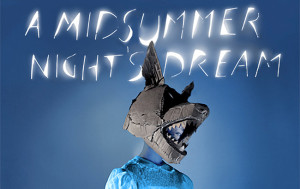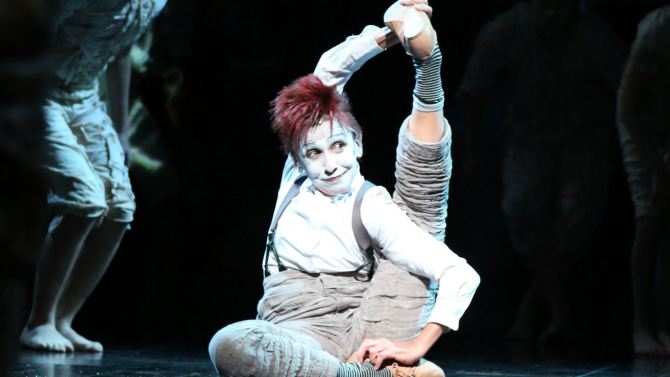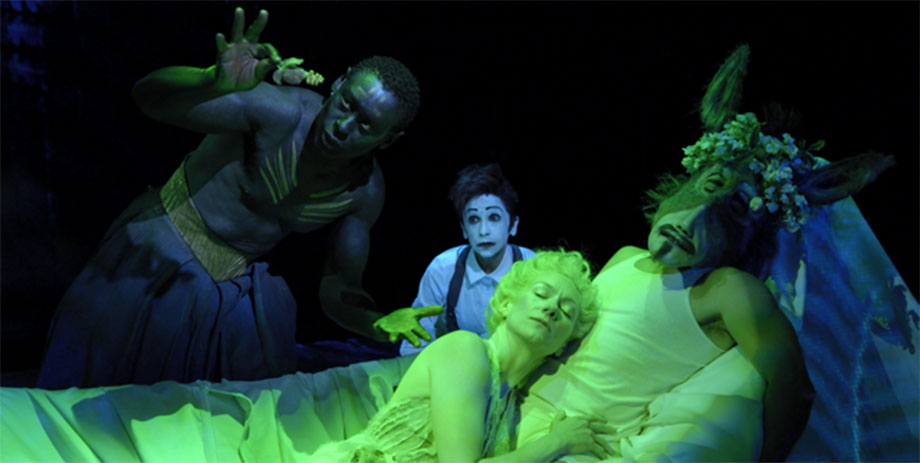Free Resources for teaching and learning about A Midsummer Night’s Dream online.
March 28, 2020 § Leave a Comment

Education at Home
It is March 2020, and I (like many people throughout the world) am sheltering in place in my home, trying to help flatten the curve of Covid-19. I am also teaching and learning almost exclusively online. Although our times are difficult, learning about Shakespeare does not have to be. Since a focus of my study has been A Midsummer Night’s Dream for several years now, I wanted to share some of my work and some of my favorite tools for exploring and enjoying the play, since it is widely assigned as an introduction to Shakespeare.
A New Online Edition
My contribution is a digital edition of the play, which you can find here:
The Players’ Reference digital edition of Midsummer
You can see a short (8 minute) video Quick Start Demo of the edition here that quickly explains why it is easy (and I hope fun) to use:
This edition has the complete text, fully glossed and annotated to explain both meaning and context, along with modes to help you speak it aloud and to practice speeches or roles you may be memorizing. It also contains useful summaries of the text and performance histories, and an essay on the way Shakespeare uses music and dance to tell the story.
My Favorite Resources
While doing my research, I ran across a number of other free tools that helped me get to know the play better, and which any student (or teacher, or parent) might also find helpful and enjoyable.
A particular favorite of mine is Akiva Fox’s brilliant Clear Shakespeare Read-Along Podcast
which I previously reviewed here on Shakespeare’s Tribe in greater detail:
You might also find audio recordings of the play helpful because you can read along while listening to them. Here are two good ones:
Folger Library Audio Recording of Midsummer, (streaming for free until July 1, 2020)
and
BBC Radio 3’s Audio Recording of Midsummer
Interestingly, I often find video and film productions less helpful when studying the script, because they demand your full attention and you can’t really attend to the text while watching them. Also, most versions that I know cut and rearrange the text extensively to create an experience more like contemporary film or television. That is not so helpful. Still, it IS useful to have an idea of how a production might look and feel. Here is a nice fifteen minute excerpt from a production at Shakespeare’s Globe in London that gives a sense of what an Elizabethan performance might have looked like.
Some Updates
The Royal Shakespeare Company has a great “Learning Zone” page dedicated to MND, from which you can access three levels of information (new to the play, intermediate and advanced) especially designed for home schooling, divided into four sections on story, characters, language and staging.
CalShakes (The California Shakespeare Theatre), local to me in the San Francisco Bay Area, has made a number of their study guides available for free for the spring including a nice one about their 2019 production of MND. You can open it, then read it here. I especially like a teen-friendly description of the plot and a nice graphic on character relationships included in it.
Finally, Shakespeare’s Globe Theatre in London has announced that they are making their entire Globe-to-Globe library of international productions available for free on their streaming platform, Globe Player, this spring, starting April 6. There is a fascinating Korean adaptation of MND in that group.
They are also making a selection of some of their most famous productions, starting with Hamlet available for two week periods each. Their 2013 production of Midsummer, staged by their then-artistic direct Dominic Dromgoole and starring their current artistic director Michelle Terry as Titania, will be available May 4-17. This is the full production from which the Oberon/Puck section was excerpted above.
Your Library Can Help
I can’t currently find any high quality, full-length productions that are easily available for free, but I am able to access Julie Taymor’s excellent film through my university’s library through two different sources, Films on Demand and ProQuest’s Alexander Street. If you do want to watch a film version you might check with your library’s online or telephone help desks to see if they offer streaming video services. A lot of them do, and during this time that so many of them have facilities that are physically closed, they are making virtual resources more widely available.
Julie Taymor’s A MIDSUMMER NIGHT’S DREAM: a review of the film
July 1, 2015 § 1 Comment
Julie Taymor’s acclaimed production of A Midsummer Night’s Dream for Theatre for a New Audience is now available in a fascinating new film, and it is well worth seeing both for her ideas about the play and about plays on film.
A Play and a Film
Because MND is so much about the theatre itself, it is not a surprise that Taymor has eschewed the location shoots she adopted for her previous Shakespeare films – Titus and The Tempest. This film records her production inside the theatre where it was performed live, capturing the visual splendor and relentless inventiveness for which she is known, but it is quite different than the relatively static live broadcasts of plays for which Britain’s National Theatre has recently become known. Taymor uses a lot of filmic techniques. Cameras on stage capture the action from extremely close distances and viewing angles that no live audience member could ever experience, and (especially at the beginning of the film) the cameras are so active as they quickly pan around the crowded stage that they give the impression of being active participants. At other times the camera becomes such a close confidant of the actors, especially David Harewood as Oberon, that the style of the acting shifts to the whisperingly cinematic.
Occasionally you get a more traditional view of the stage, usually when Taymor is recording the interaction of actors and the extraordinary projections on floating silk banners and canopies that astounded the live audiences in Brooklyn. As impressive as these shots are, this alternation between the conventions of film and theatre is sometimes disconcerting.
Kathryn Hunter, Genius
Both the production and the film are completely built around the performance of the remarkable Kathryn Hunter as Puck. She opens the film as an exhausted sleeper drifting off into dreams, and when the rude mechanicals (as modern dress Brooklyn construction workers) show up and cut her bed free she literally drifts into the grid above the stage like a balloon. Her first full scene, with what is ordinarily a single fairy but is here a full cast of children who sing and chant the scene, establishes her distinctive childlike voice. Her wide-open wonder plays especially strongly in her scenes with Oberon, where she idolizes him like a parent–sometime fearful and sometime delighted to be pleasing him. It is the most fully imagined and realized Puck I have ever seen. For her performance alone, the film is worth your time.
The film is not without theatrical and cinematic flaws. Taymor is frequently more concerned with the big picture than the detail – and almost always prioritizes the visual over the auditory. The sound appears to have been captured through body mics, but sometimes you hear the faint echo of an additional actor’s mic. Often the scansion is sloppy. (At one point the possessive form of Theseus’, which should be two syllables, thes-yus, is rendered as four: Thes-e-us-es!)
Multiethnic and International
The production is especially interesting in the realm of the supernatural, where Taymor’s visual genius prevails, while the “real” world is more mundane. Unfortunately that is not just because the visual presentation is more restrained. It seems the interpretive act was just less interesting to Taymor. The lovers were trivialized, with only Mandi Masden as Helena making an impression, and the admirably multiethnic mechanicals were largely conveyed through broad stereotypes. Max Casella was amusing as a Brooklynese Bottom, but (as is often the case) Flute steals the show from him. In this case it is Zachary Infante’s Spanish speaking Francisco Flute that unlocks the wonder of Shakespeare’s power, as he discovers the ability to invest words he scarcely understands with meaning and power.
The most interesting casting of the evening is Okwui Okpokwasili as the conquered Queen Hippolyta. Both the gender and racial politics of the part were treated lightly, but her powerful presence was more than enough to make the point.
Finding the right level for a film of a play is a complex task. This relatively complete production of the script is FAR more satisfactory than Michael Hoffman’s disappointing, choppy 1999 film, and in many ways is also more pleasing than Adrian Noble’s similarly mixed film/play (1996) of his RSC production, if only because it utilizes more interesting theatrical conventions.
The film is in limited release, but absolutely worth catching on a large screen whenever you can.



